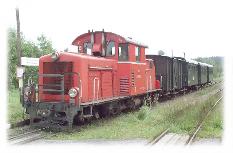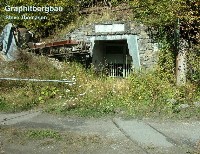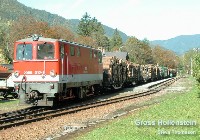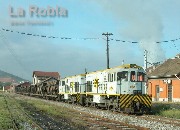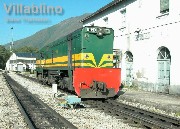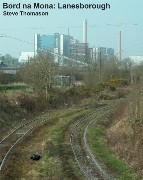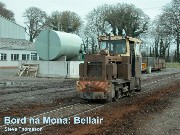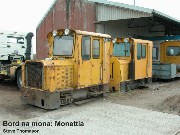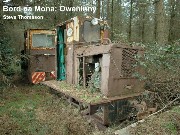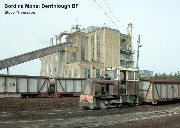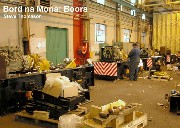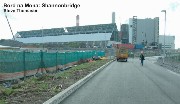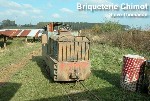IRELAND: March 2004
Midland Irish Peat, Rathowen
(2ft gauge) Lansdale Yard was working normally with the Diema (no.2639), the Ransoms and Rapier (both pictured), and the Alan Keef loco in the yard.
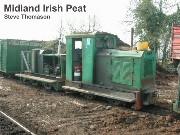 At the mill, No.6 the MotorRail was present, with No.5 (Diema 2872) off the tracks in need of attention. Two locos were said to be track lifting out on the bog. No peat had been brought in for a while but the railway was to be used again in approx 2 weeks.
At the mill, No.6 the MotorRail was present, with No.5 (Diema 2872) off the tracks in need of attention. Two locos were said to be track lifting out on the bog. No peat had been brought in for a while but the railway was to be used again in approx 2 weeks.
|
Attymon Peat Co-operative, Attymon
(3ft Gauge) The Clonkeen site was working normally but with the railway only in use approx 3 times per week when turf stocks required building up on the tiphead. Three locos were present LM38e, LM164Q, and No.4 (LM34 assumed).
The Attymon site was only starting to wake up from the winter layover with equipment being overhauled in the yard. This site was expected to be in production in 2 weeks time. Locos observed were Rustons LM17 and LM41 by the workshops, but the loco shed was locked. The derelict Simplex (LM346) was still on a siding near the works.
|
Bord na Mona, Coolnamona
(3ft Gauge) Working normally but only bringing in peat from the northern branch. All three Wagonmasters (LM275, LM372, LM335) were in use.
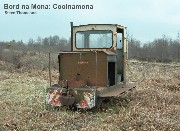 The rebuilt Ruston LM167 was out of use by the tippler and what was previously reported as the last working Simplex (60SL742) in Bord na Mona was found dumped out of use on a disused branch a few hundred yards from the works (pictured).
(Posted 08.04.04 Source: Steve Thomason)
The rebuilt Ruston LM167 was out of use by the tippler and what was previously reported as the last working Simplex (60SL742) in Bord na Mona was found dumped out of use on a disused branch a few hundred yards from the works (pictured).
(Posted 08.04.04 Source: Steve Thomason)
|
